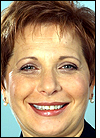Jul 03, 2007The Australian government has taken another step toward bringing the country's passive UHF RFID systems in line with international standards and other countries' regulations. The Australian Communications and Media Authority (ACMA) has renewed GS1 Australia's current 4-watt scientific license for an additional 12 months. This allows the Australian branch of GS1, an international standards-setting organization, more time to test UHF EPC RFID systems operating at 4 watts in the 920-926 MHz band.
The ACMA is the government agency responsible for regulating radio frequencies in Australia. With the renewed scientific license, GS1 Australia will be responsible for granting authorization to individual sites to operate under the license.
GS1 Australia has been lobbying the ACMA to change its current regulations requiring a license for RFID interrogators operating at 920-926 MHz and transmitting more than 1 watt of radiated power. "For anything between 1 watt and 4 watts," says Maria Palazzolo, CEO of GS1 Australia, "you have to apply for a specific license. Our aim is to have the current class of licenses for Low Interference Potential Devices (LIPD) changed to 4-watt so that anyone can use this power without a license." Increasing a reader's power to 4 watts can double the read distance of RFID tags, as compared with the performance of the 1-watt readers.
GS1 Australia has had the 4-watt scientific license for two years (see Australia's UHF Readers Get a Boost). Ordinarily, the ACMA grants scientific licenses only for 12-month periods, Palazzolo says, handling renewals on a case-by-case basis. "But as the adoption of RFID in Australia has been a lot slower than anticipated," she explains, "we have not been able to provide sufficient data to assess the effect of 4 watts. Industry is reluctant to invest in trials until they know that [use of] 4 watts is secured; hence, the extension of the scientific license is an important step toward achieving this."
The license renewal will give GS1 Australia and businesses further opportunity to test UHF RFID technology—in particular, to provide the ACMA with data intended to alleviate concerns that the spectrum might become overly congested if RFID adoption significantly increases. "While there is some data from laboratory trials," says Palazzolo, "the ACMA is requiring more field data, provided through the 4-watt scientific license, before making a final decision."
In addition, the testing will help determine the cumulative effects—if any—of RFID systems operating at 4 watts on the nation's digital cellular telephone network, which uses Global System for Mobiles (GSM) technology and operates at frequencies adjacent to the 920-926 MHz band utilized by UHF RFID systems. GS1 Australia, she notes, will collect data regarding the effect of multiple RFID interrogators situated near base stations operated by Vodafone.
"ACMA wants to ensure that multiple readers at the increased power level will not affect Vodafone phone signals," Palazzolo says. "GS1 Australia is confident that this will not be a problem; however, the scientific license extension will allow us to thoroughly test and document this for ACMA. We will also be using this extension time to develop an installation guide to help installers of the equipment."
In the next six months, GS1 Australia will focus on providing the ACMA with the scientific testing results it needs to approve the 4-watt license. The tests need to be completed, and the report provided to the ACMA, by December. If the agency is happy with the test results, the hope is that it will initiate the process needed to enact changes to the LIPD. Any regulatory changes must first go through a public review process, then be approved by the Australian Parliament. That process is expected to take approximately six months. In addition, Palazzolo says, GS1 Australia also plans to continue working with businesses to test EPC UHF RFID in pilots.


